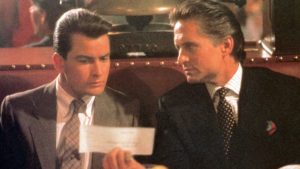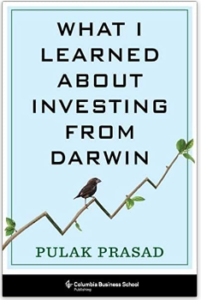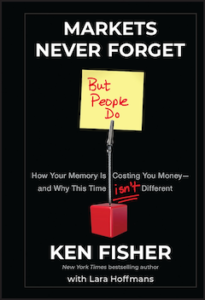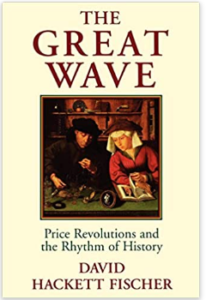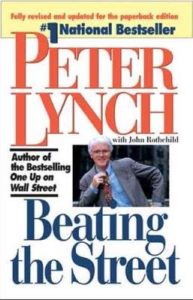Adam Smith is known as The Father of Economics, but one might argue that Richard Cantillon (1680-1734), who came before Adam Smith and is credited with introducing the concept of the entrepreneur, was the real father. Before the entrepreneur emerged as a driving force of growth in the 1700s, no material new wealth had been created by humans for centuries. There had been periodic bursts of prosperity, but none were lasting, and they typically ended in war, plague, and/or famines – which, on average, kept population in check. Cantillon obviously did not create the entrepreneur, but he was one himself (a banker and fine wine broker), and he was the first to highlight their dominant role in wealth creation.
Adam Smith was no doubt a giant among the economists in the Age of Reason, but as Callum Williams argued in his 2020 book, The Classical School: The Turbulent Birth of Economics in Twenty Extraordinary Lives (2021), Smith took credit for many of his predecessors’ insights, including Cantillon’s. Williams is clearly not a fan of Smith, but then again, he doesn’t seem to be a fan of any of the twenty enlightened lives that he profiles chronologically (by date of death) in his book, of which Cantillon was #4 and Smith was #7. The only two that he seemed inclined to praise were William Jevons (1835-1882), who re-discovered Cantillon, and Alfred Marshal (1842-1924), who was John Maynard Keynes’ professor at King’s College in Cambridge. These two economists were the most quantitative in their approach, while most of the others, including Adam Smith, were philosophers. Either way, Callum Williams devotes only a few pages to Cantillon, and he largely dismisses him as a footnote in history, which wasn’t quite fair, in my opinion.
In 1734, a year after arriving in London, Cantillon’s lavish home on Albemarle Street was mysteriously burned to the ground. His papers were destroyed and it is generally assumed that he died in the fire (link). Cantillon was embroiled in lawsuits tied to John Law and his monetary schemes. He had moved from Paris to London in 1733 to avoid being arrested. That his body was never recovered sparked speculation that he staged his death, and the fact that some of his documents have turned up in Suriname corroborate these theories. Proof of his wealth can be inferred from his renting of the hotel d’Angivilliers in the prestigious rue de la Monnaie, for an exorbitant amount in 1718 (link), five years before Adam Smith was even born. We still know little about Cantillon the man, but by all accounts, he was no mamma’s boy, and he knew his markets.
When Adam Smith was born in Scotland in 1723, Cantillion was already 43 and living lavishly between estates in France in Spain. He made his fortune speculating in stocks in the early 1700s, including in the Mississippi and South Sea Bubbles. But unlike the promoters of these schemes, who made history for blowing up badly, Cantillon seemed to know when to cut and run, and when to pounce. One article in the Irish Times (link) claims that “while alive he used his skills to become fabulously wealthy, and was known wherever he went as the Irish banker. Indeed, his reputation for making fortunes when others were losing their shirts – notably in the Mississippi Scheme and South Sea Bubble – earned him many enemies.”
Cantillon wrote Essai Sur La Nature Du Commerce En Général when he was about 50. The piece was made public after its author’s disappearance in 1734, and it circulated in pamphlets for some 20 years before it was officially published in French. Per Wikipedia: “This work remains Cantillon’s only surviving contribution to economics. It was written around 1730 and circulated widely in manuscript form, but was not published until 1755. … Despite having much influence on the early development of the physiocrat and classical schools of thought, this work was largely forgotten until its rediscovery by the Economist William Jevons in the late 19th century.”
Intrigued, I went to the source. His 250-page book is available for free on the internet (link), but I paid for a cheap copy on the Kindle just so I can have it read to me at max speed. In the introduction to the $2.99 Kindle edition, Anthony Brewer is mentioned as Cantillon’s biographer, but his book, Richard Cantillon: Pioneer of Economic Theory (1992), was useless. The original essay from 1755 was edited and annotated by Mark Thornton (2011), which is what I ended up reading. In the introduction, Thornton does a better job with Cantillon’s biography than Brewer’s book. His abstracts at the top of each chapter are helpful, as the earliest translation to English in 1931 was not very readable. The top insight relates to Chapter 13, where Cantillon introduced the theory of the Entrepreneur. “Entrepreneurs are the prime directors of resources,” Thornton writes, and “their occupations come with risks due to uncertainty, especially from competition and changing tastes. As a result, their income can be very large, but they also face the prospect of bankruptcy.” In Cantillon’s words, “I will therefore establish as a principle that the property owners alone are naturally independent in a state; all the other classes are dependent, whether entrepreneurs or hired, and that all the exchange and circulation of the state is conducted by the actions of these entrepreneurs.” The term “capitalism” had not been coined in the early 1700s, but Cantillon was clearly onto it.
All told and to the few who look closely, Richard Cantillon emerges as a genius who was clearly well ahead of his time, but he was cited only once in Adam Smith’s The Wealth of Nations (1776), as someone whose opinion wasn’t credible. Smith promoted his ideas by desecrating all over the ideas of the classically leaning economists who came before him, and as such, he was no Isaac Newton (1642-1726), which he knew of but didn’t get to meet personally, as Newton died when Smith was just two. Had the closing of the sliding door (link) occurred at a different, inframince moment in history (link), we would see the invisible arms from which the invisible hand was conceived – and I have nothing against Smith – but I think those arms belonged to Cantillon, the true giant!
With an 1819 printed edition by The Father of Economics selling for thousands of dollars these days (link), I must agree with Callum Williams that Adam Smith gets way too much credit. A self-proclaimed expert of wealth, he made no big money himself, like Cantillon did. He was certainly a brilliant thinker and an influential academic, but he was also a bit of a mama’s boy. Two years after his magnus opus was publish, he went to live with his mother in Edinburgh. He outlived his mother by just 6 years, and died at their only house in July 17, 1790, at just 67, penniless. He never married, and Callum Williams speculates that he and David Hume (1711-1776) were a couple, which seems far-fetched. My Google searches revealed that “in the early part of Mr. Smith’s life, it is well known that he was for several years attached to a young lady of great beauty and accomplishment. … The lady to whom I allude died also unmarried.” (link). The house where he died, known as Panmure House, stands to this day, and it’s nothing that special (link). It was originally built in 1691-3 for Lord George Murray (link) and was subsequently owned by the estate of the Earl of Panmure (link). It was the residence of Adam Smith from 1778 to 1790, but it was his mother’s place. And after Smith died, the place fell into disrepair, and was only restored in the 1950s as a boy’s club. You can’t make this up.
Richard Cantillon, by contrast, married and had two kids. His boy died young, but his daughter married well. Cantillon was known to travel throughout Europe with his bride, who he left abruptly by disappearing in 1734. Meanwhile in paradise…questions abound to this day: “Who was the mysterious Chevalier de Louvigny who arrived in Surinam with a collection of documents relating to Richard Cantillon?” (link)




